CfAI news and events
Space Optics Workshop 2024
We were delighted to welcome over 60 delegates to Durham University for our 'Space Optics: Systems and Applications' conference, organised and funded by our STFC Impact Acceleration Account and supported by our fantastic Durham University Business and Partnerships team.
The participants were a mix of academia, industry and research organisations, there was plenty of time for networking and invited talks from:
Christophe Buisset (ESA), Rory Evans (Oxford University), Carolyn Atkins, UKRI (ATC), Steven Knox (Surrey Satellite Technology), Cyril Bourgenot (Durham University) and Ann Fitzpatrick.
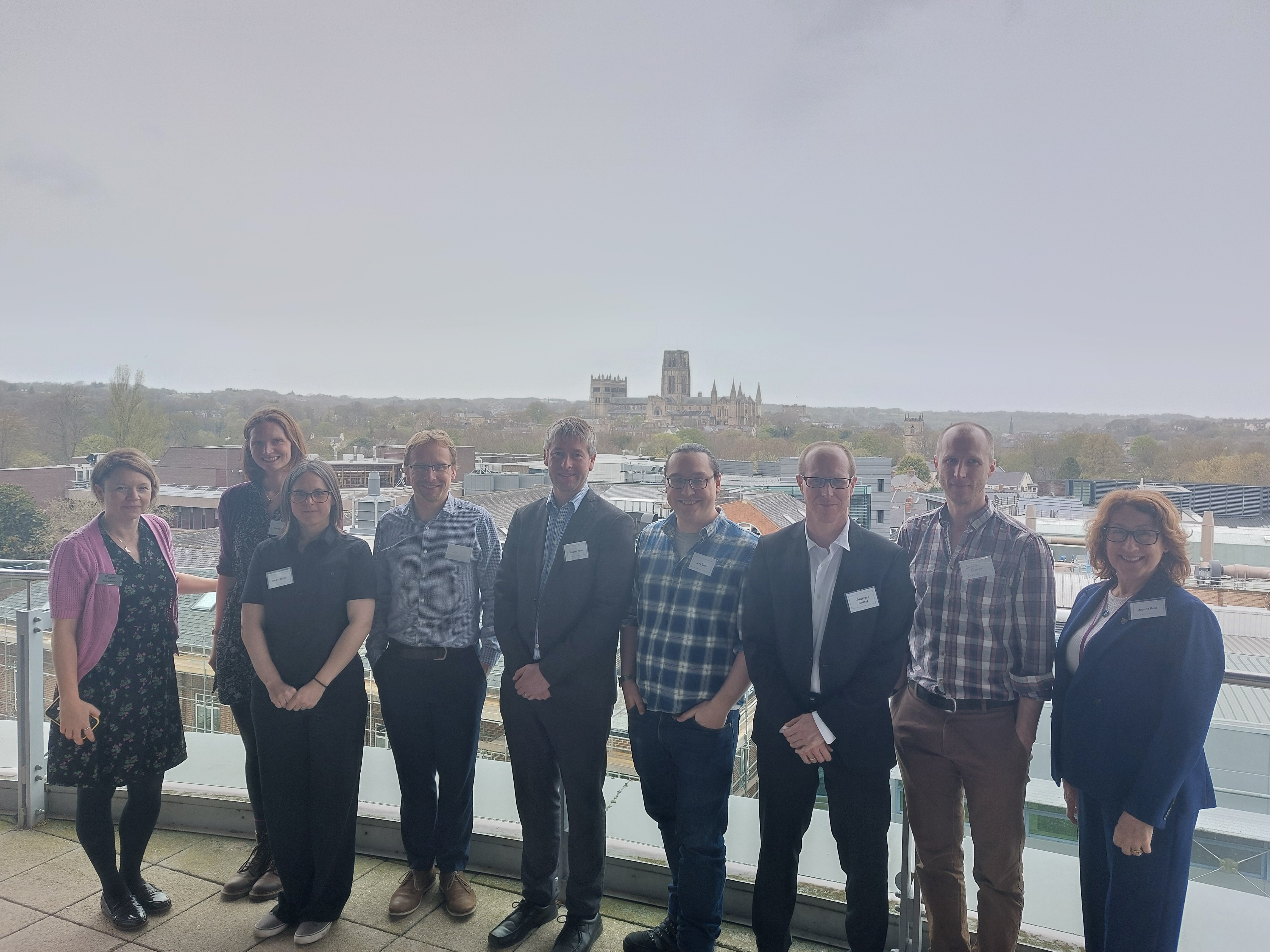
METIS Integral Field Unit for the Extremely Large Telescope
Today, we bid farewell to the METIS Integral Field Unit pupil mirror array, crafted from 28 meticulously designed slices and a composite planar fold mirror. This remarkable piece of engineering is now on its way to the UK Astronomical Technology Centre in Edinburgh, where it will undergo the final assembly process as a vital component of the METIS instrument at the focus of the Extremely Large Telescope.
METIS (Mid-infrared ELT Imager and Spectrograph) will be one of the first generation instruments for the 40m European Extremely Large Telescope (ELT). METIS is designed to be a workhorse for ground-based optical astronomy with science cases from objects in our Solar System to distant active galaxies and even probing the properties and atmospheric composition of planets orbiting distant stars.
The entire team has dedicated hours to shape this aluminium blank into a sophisticated marvel. A special shoutout to everyone involved in the metrology process, which required a highly specific setup to ensure the position measurement of each facet relative to the others.
We look forward to the significant contributions METIS will make to our understanding of the universe. Kudos to the team for their hard work and dedication in advancing astronomical technology!

The Royal Astronomical Society has awarded the RAS Group Achievement Award 2024 to the team of the instrument MIRI for the JWST.
"Following the launch of JWST on December 25th 2021, the performance of MIRI has been spectacular, producing ground-breaking scientific results encompassing our own solar system, extrasolar planets, star formation in our own and nearby galaxies, and the properties of the most distant galaxies. These scientific achievements testify to the ambition, dedication and professionalism of Professors Wright and Rieke and of the entire MIRI Team. For these reasons the JWST-MIRI Team is awarded the 2024 Group Achievement Award (A) of the RAS."
MIRI was developed by a large international consortium, comprising many institutes in ten European countries and the United States, in partnership with ESA and NASA, including the CfAI in Durham University, and led by Professor Gillian Wright of the UK Astronomy Technology Centre and Professor George Rieke of the University of Arizona.
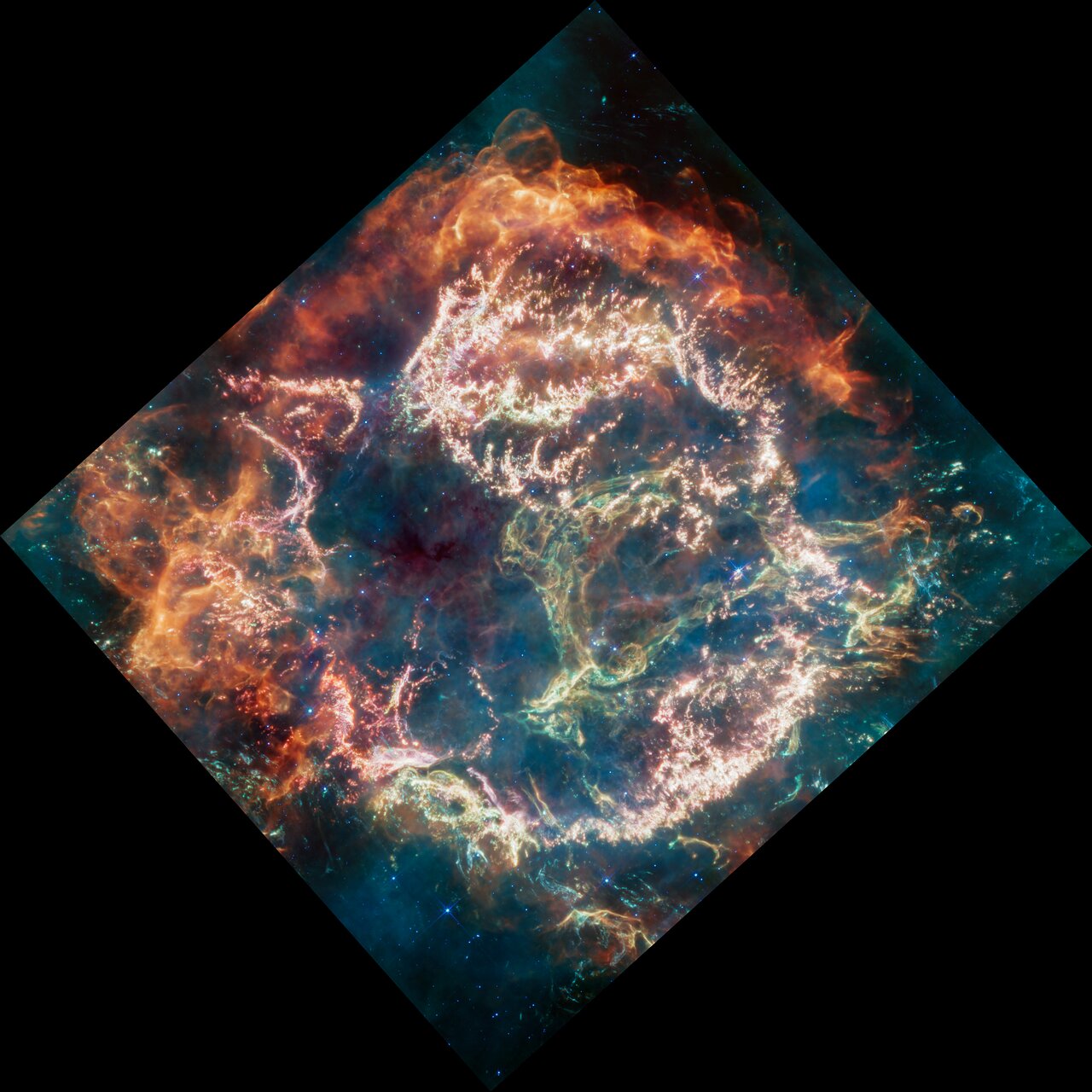
Cassiopeia A (Cas A) is a supernova remnant located about 11,000 light-years from Earth in the constellation Cassiopeia. It spans approximately 10 light-years. This new image uses data from Webb’s Mid-Infrared Instrument (MIRI) to reveal Cas A in a new light.
Credit: NASA, ESA, CSA, D. Milisavljevic (Purdue University), T. Temim (Princeton University), I. De Looze (UGent), J. DePasquale (STScI)
CfAI would like to welcome Dr. Robert J. Harris (Rob) back!
After doing his PhD in astrophotonics here at the CfAI he moved to Heidelberg Germany on a Zeiss fellowship. Here he also diversified his research interests, continuing his work in astrophotonics and also including work in 3D printing and helping develop MICADO, the first light imager and spectrograph for the Extremely Large Telescope. Now he’s back as an assistant professor we look forward to developing new integral field units, integrating state of the art 3d printing into our freeform optics and exploring new and exciting fields.

Spotlight on... Satellites
Our dedicated team of CfAI staff actively engaged in the 'Spotlight on... Satellites' event, hosted at the Centre for Life in the heart of Newcastle city on Saturday, October 7th. We showcased three captivating activities related to space and satellite instrumentation. Our demonstrations featured the remarkable Schlieren Imaging technique, allowing attendees to visualise atmospheric turbulence, as well as engaging on spectroscopy technique and instrumentation. Additionally, we introduced the fascinating world of telescopes.
We were delighted to inspire and captivate a young audience with the intricacies, challenges, and sheer excitement of satellite instrumentation. Witnessing the enthusiastic interest of so many young minds was truly rewarding.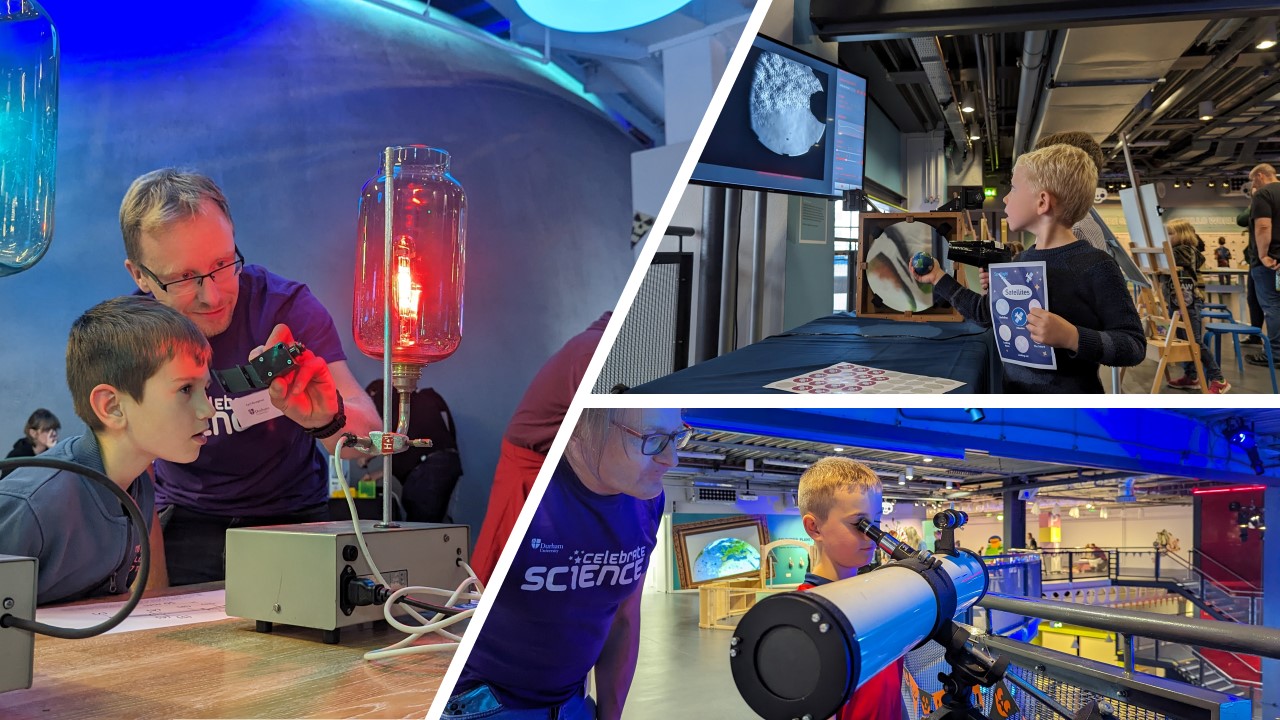
Space Applications in Science and Industry Summer School 2023
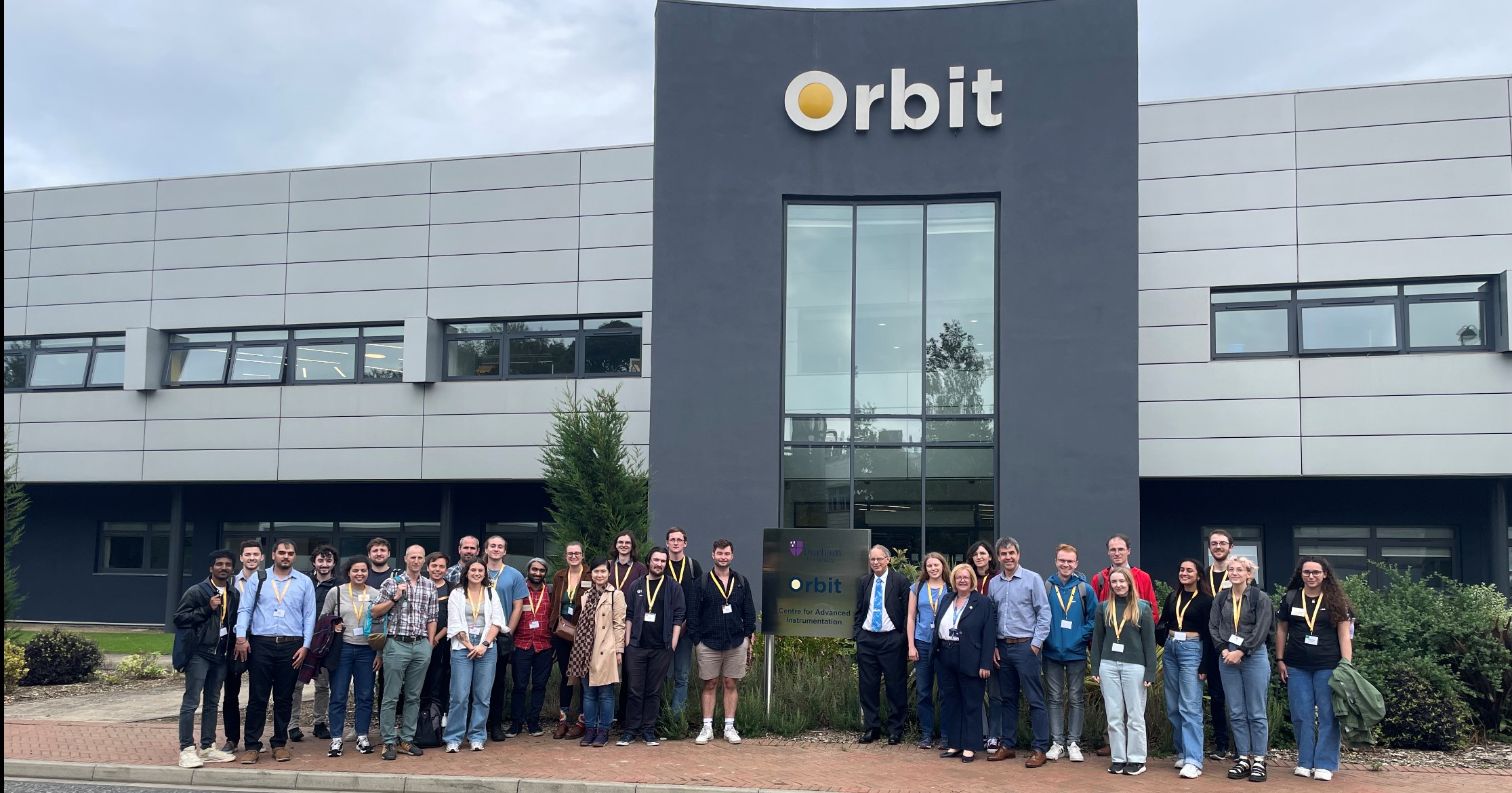
This week we hosted the STFC Space Technology Applications in Science and Industry Summer School at Durham University.
We were super impressed by our students from all over the country and our world-leading speakers and learnt a lot from both! The goal was to provide an overview of space activities in science and industry. We wanted to highlight opportunities but also to discuss the critical aspects of sustainability in space.
It has been a busy week!
We have been discussing the good and not so good side of space. Looking at designing space missions with European Space Agency - ESA (Giuseppe Racca), future space industry opportunities with the Satellite Applications Catapult (Mike Curtis-Rouse and Laura González Llamazares), Space Governance (Nikita Chiu, University of Exeter), Space Law (Christopher J. Newman, Northumbria University), Conflict and Collaboration (Andy Lawrence, The University of Edinburgh), Space Insurance (Mark Williamson, Space Technology Consultant), outreach and public engagement (4wardFutures) and space sustainability (Ralph "Dinz" Dinsley, 3S Northumbria).
We also made space to talk about resilience and mental health during post-graduate study and a careers panel session including Nikita Chiu (University of Exeter), Ariadna Calcines-Rosario (Durham University and Dan Rhodes, PMP Rhodes (Filtronic) exploring the pathways, differences and similarities of careers in academia and industry.
On Thursday we took a trip to Netpark and Orbit (thanks Sara Williams, David Allenson, Christina Munn!) to tour around some of our NE space businesses including Filtronic, aXenic, Raytheon NORSS and MAC SCITECH LIMITED).
I would like to say thank you to everyone involved for making it such a productive week!
We are now looking for sponsors for the next one - get in touch if you can help!
European Adaptive Optics Summer School
We are pleased to announce that registration is open for the 2023 European Adaptive Optics Summer School, which will be held virtually and aligned to European time zones. Topics will cover the basics of adaptive optics across applications in vision science, ophthalmology, astronomy, microscopy, free space optics and beyond. The programme includes live lectures and demonstrations and lab tours. The course will be delivered via Zoom by experts from across the different application areas of AO.

Early bird registration deadline (£75): Monday 8th May 2023 (midnight GMT)
We are also offering a number of free places as scholarships, you can apply via the registration form
For more details visit: https://aoschooleurope.sciencesconf.org/
To register visit: https://forms.office.com/e/RCMwCQJCHP
Organising committee
Laura Young - Newcastle University
Karen Hampson – University of Manchester
Qi Hu – University of Oxford
Martin Booth – University of Oxford
Adam Dubis – University College London
Enrique Josua Fernández – Universidad de Murcia
Caroline Kulcsár – Institut d’Optique
Pedro Mecê - Institut Langevin
Serge Meimon - ONERA
Tim Morris – Durham University
Benoit Neichel - Laboratoire d'Astrophysique de Marseille
James Osborn – Durham University
Kieran O'Brien – Durham University
Marinko Sarunic - University College London
CfAI at AO4ELT
Adaptive Optics for Extremely Large Telescopes (AO4ELT) is the largest conference in the field with 300 delegates from all over the world. CfAI researcher, Ryan Griffiths, has been offered a prestigious invited talk to present his work on the 24hour SHIMM, the world's first continuous optical turbulence monitor. In total there will be 6 presentations from CfAI staff, including Ali Bharmal, Aurelie Magniez, Ryan Griffiths, Sylvain Cetre, David Barr and Lisa Bardou.

Freeform Optics Applications & Manufacturing for Astronomy & Space Missions
CfAI members will participate to a workshop in Chiang-Mai Thailand organised by NARIT on Freeform Optics between the 27th and 30th of May 2023. The workshop will focus on the manufacturing, metrology and various applications of these exotic surfaces in space and astronomical optical systems. Contact: cyril.bourgenot(at)durham.ac.uk.

CfAI's Lily Westerby-Griffin and Fionagh Thomson explain astronomical instrumentation supported by Durham University Orchestral Society
Durham University Orchestral Society collaborated with the Durham University astronomer’s and instrument scientists in a performance of Holst’s The Planet Suites.
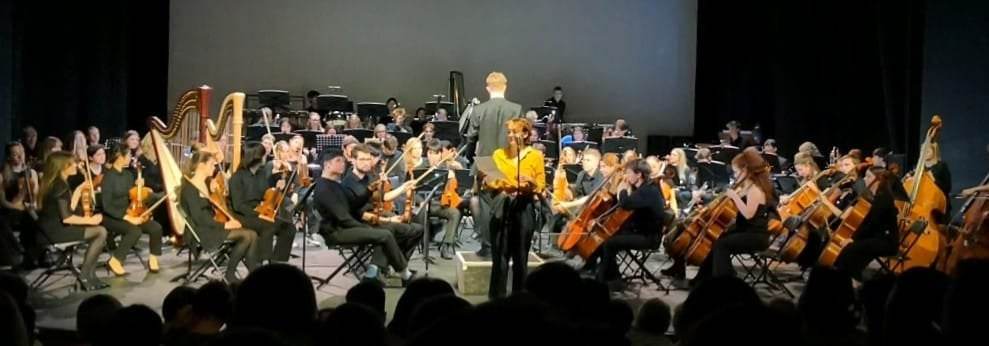
Ariadna Calcines
Young Female Scientist Talent of Spain 2022
Dr. Ariadna Calcines, senior optical engineer at CfAI, has received the Young Female Scientist Talent Prize 2022 awarded by the Royal Academy of Sciences of Spain (FRACE) in collaboration with Mastercard Spain. This prize is awarded to four female scientists under 45 who have made a significant contribution to sciences in Spain in four categories: Physics and Chemistry; Maths; applications of sciences to technology and Biology and Geology. She has received the prize in the category of applications of sciences to technology for the development of the image slicer technology for solar physics. The design of this technology is her main research line within CfAI applied to night-time and solar observations for ground-based and space telescopes.
Further information can be found in this link.

Dr Ariadna Calcines (far right) with fellow awardees
COAT 2023
Communications and Observations through Atmospheric Turbulence
A multidisciplinary workshop to address the biggest challenges in free-space optical propagation from astronomy to laser communications.
More information here.

In a large variety of fields, the development of ever more demanding optical systems now requires a thorough understanding of the impact of atmospheric turbulence together with the development of dedicated mitigation strategies. Originally driven by astronomy, these issues now concern near ground imaging, satellite observation, ground-space and near ground optical free-space telecommunications and laser focusing.
The workshop aims at giving an overview of current research activities in this field. It will address turbulence impact and mitigation, especially in challenging environments such as strong turbulence, strong scintillation, high apparent wind speeds induced by target tracking, anisoplanatism effects due to the field of view or point-ahead angle.
The following topics will, therefore, be addressed during the workshop:
knowledge on turbulence conditions (modelling, characterization & prediction of both Cn² and wind profiles), including free atmosphere and local turbulence; study of system performance with and without mitigation; mitigation strategies based on innovative optical solutions such as single aperture adaptive optics, multi-aperture or aperture diversity solutions, integrated optics architectures, new wave-front sensing approaches, sensorless solutions, laser guide stars, high performance control; lastly, image/signal pre- and post-processing techniques (deconvolution, PSF prediction, digital communications techniques), novel reception schemes and advanced digital signal processing.
24 hour continuous turbulence monitoring at Paranal, Chile
Lisa Bardou and Ryan Griffiths carried out the first continuous optical turbulence monitoring at the European Southern Observatory site at Paranal, Chile.
The Shack Hartmann Image Motion Monitor (SHIMM) is the first instrument capable of measuring optical turbulence continuously day and night. This is important to support operations of optical astronomical telescopes. The night time measurements enable programme management and the daytime measurements enable continuous assimilation into turbulence forecast models.


/prod01/prodbucket01/media/durham-university/departments-/physics/cfai/CfAI-Webpage-Banner-smaller.jpg)
